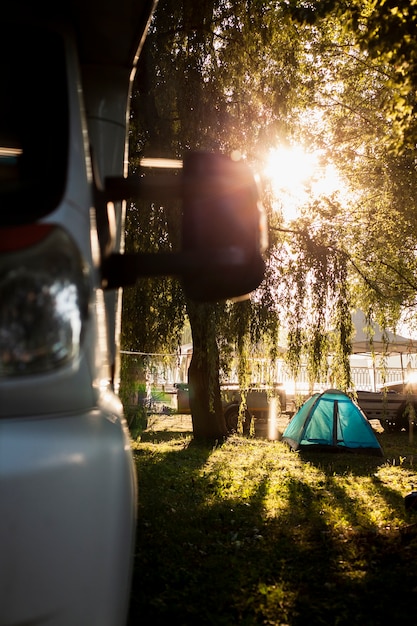With international travel on hold, folks are discovering the joys of local exploration. From the U.S. to Canada, England, Europe, and New Zealand, people are hitting the road in cars, campervans, and RVs. It’s a great way to maintain social distancing while still enjoying the great outdoors!
My friends Mike and Anne from HoneyTrek, who are full-time RVers, have some great tips for starting your RV adventure on a budget. A few years ago, the van life trend sparked curiosity about traveling across North America. But with the onset of COVID-19, the idea of having a mobile home suddenly became very appealing.
RVing is a safe and convenient way to travel right now. You don’t have to worry about crowded planes or questionable hotel rooms. An RV gives you the freedom to explore while providing the comfort of your own space.
Mike and Anne have tried all sorts of travel styles over their eight-year "HoneyTrek", but they fell in love with the campervan lifestyle in New Zealand. For the past three years, they’ve been traveling full-time in their 1985 Toyota Sunrader, "Buddy the Camper", covering everything from the Baja Peninsula to the Arctic Circle and 47 states in between.
They’ve learned a lot on their journey and are eager to share their insights. Here are some key things to know before setting out on your RV adventure:
Choosing the Right Size RV
For the best balance of adventure and comfort, Mike and Anne recommend a camper around 21 feet long. While larger RVs may look tempting, remember that size can limit mobility. A shorter rig allows you to access rugged terrain, fit in regular parking spaces, avoid length restrictions on winding roads and ferries, get better gas mileage, and have fewer things to break.
Powering Your RV
RVs and campers have a house battery to run lights, water pumps, fans, and power electronics. You can keep it charged by driving a few hours per day, plugging in at a campground, running a generator, or using solar panels. If you’re planning a long-term journey, consider installing a solar system.
Staying Connected
Your smartphone can serve as your mobile router. Choose a carrier with a broad national network to ensure reception in remote areas. Monitor your data usage and save big downloads and uploads for free Wi-Fi zones.
Finding Places to Camp
There are plenty of free campsites scattered around the U.S. on public lands. These sites may be bare-bones, but if you have a self-contained camper with your own water and bathroom, all you need is a peaceful spot with a good view.
Saving Money on Gas
Use the GasBuddy app to find the cheapest gas prices along your route. Sign up for gas station rewards programs and keep your tires inflated at the recommended PSI.
Exploring the Back Roads
Set your GPS to "avoid highways" to discover the beauty of the country. America’s Byways, a collection of 150 distinct and diverse roads protected by the Department of Transportation, offer some of the best routes.
Taking Glamping Breaks
Treat yourself to the occasional glamping getaway to avoid burnout. These creative outdoor accommodations offer a plush bed, hot shower, and friendly host.
Protecting Yourself and Your Ride
Consider RV insurance, travel insurance, and roadside assistance to be ready for whatever comes your way.
As full-timers, Mike and Anne are incredibly passionate about RVing and have a lot to share about road trip itineraries, advice about buying a vintage camper, and lessons learned from three years on the road. The RV and #vanlife community online is also a great resource for help and advice.
